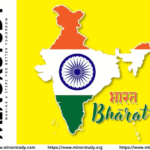Police Commemoration Day – All You Need to Know
Policing is one of the most demanding jobs – one where the line between ordinary and extraordinary can blur in an instant. The day we call Police Commemoration Day is a moment to stand still, reflect, and deeply honour those members of the police services who laid down their lives in service of us all. In India, this date carries profound meaning; globally, similar observances remind us of the sacrifice and commitment of law‐enforcement professionals. Here, in a warm, conversational, human-friendly tone, we’ll walk through the history, timeline, facts, significance, observance, wishing, daily-life impacts, FAQs, and conclusion of this important day — and why it matters to each one of us.
- 1. History of Police Commemoration Day
- 2. Timeline & Milestones
- 3. Facts You Should Know
- 4. Significance – Why This Day Matters
- a) Honour and remembrance
- b) Awareness of risk and duty
- c) Societal respect and trust
- d) Reflection on service and sacrifice
- e) Inspiration for future generations
- 5. How It’s Observed (Practically)
- 6. Wishing on Police Commemoration Day
- 7. Importance in Our Life & for Society
- 8. FAQs (Frequently Asked Questions)
- 9. Important Points to Remember
- 10. Conclusion – Why Police Commemoration Day Matters in Daily Life
1. History of Police Commemoration Day
Let’s begin with the story behind the day in India (and some global context), which gives it real roots and emotional weight.
India’s origin story
On 21 October 1959, a reconnaissance party of the police (and related forces) at a remote post known as Hot Springs (in the Ladakh/Aksai Chin region) was ambushed by Chinese troops. Ten policemen lost their lives. mumbaipolice.gov.in+2The Economic Times+2
Their bodies were returned after some time (23 days) and were cremated with full honours. The Logical Indian+1
In January 1960, during the conference of Inspectors General of Police (IGsP/DGsP), the decision was taken that 21 October each year will be observed as Police Commemoration Day. nationalpolicememorial.gov.in+1
Over time, this day became an institutionalised day of remembrance for all police personnel who died in the line of duty. Wikipedia+1
The National Police Memorial in Delhi (Chanakyapuri) was inaugurated on 21 October 2018. Wikipedia+1
How other countries observe similar days
While our focus is the Indian observance, it’s helpful to know that elsewhere, similar days exist:
In the United States, Peace Officers Memorial Day on 15 May honours law‐enforcement officers who died or were disabled in the line of duty. Wikipedia+1
Many countries have memorial days recognising police sacrifice and service.
This global resonance adds to the gravitas of the concept: it is not just a celebratory day, but a solemn reminder of what service and sacrifice truly mean.
2. Timeline & Milestones
Here’s a timeline to put the key moments in order:
| Year | Event | Why it matters |
|---|---|---|
| 1959, 21 Oct | Ambush at Hot Springs, Ladakh: ten policemen killed. mumbaipolice.gov.in+1 | Sets the origin of the commemoration. |
| 1960 (Jan) | IGsP/DGsP conference decides to observe 21 Oct annually. Delhi Tourism+1 | Formalises the annual tribute. |
| 2002 | Foundation stone for National Police Memorial laid (land allotted). nationalpolicememorial.gov.in | Shows growing recognition of policing sacrifices. |
| 2018, 21 Oct | National Police Memorial inaugurated by Prime Minister. Wikipedia+1 | Public landmark and national focus. |
| 2023–24 … | Annual observances include wreath‐laying, parades, community events. nationalpolicememorial.gov.in+1 | Continuity and public engagement. |
3. Facts You Should Know
Here are some key facts about Police Commemoration Day and police sacrifices:
The “Wall of Valour” at the National Police Memorial bears the names of over 34,844 personnel from central and state police forces who died in the line of duty since 1947. Wikipedia
The memorial and museum cover over 2,000 years of policing history in the Indian sub-continent. Wikipedia+1
21 October is the date chosen to commemorate not just the original ambush victims but all police personnel who have sacrificed their lives. The Economic Times+1
Observance is across India, by all state police forces, central police organisations, and includes public engagement programmes. Jagranjosh.com+1
Globally, the concept of a police memorial day emphasises the danger and the public-service nature of policing. Wikipedia
4. Significance – Why This Day Matters
Now let’s talk about why this day is significant – not just formally, but personally and societally.
a) Honour and remembrance
Police Commemoration Day honours those who gave the ultimate sacrifice. When a police officer goes into harm’s way, they leave behind family, community, and a commitment to protect others. This day acknowledges that commitment and ensures their service is not forgotten.
b) Awareness of risk and duty
Policing is not a 9-to-5 safe job. It involves danger, unpredictability, and often putting one’s own life at risk so that others may live in safety. The observance reminds citizens that behind law and order are people who serve, often at great personal cost. Business Standard+1
c) Societal respect and trust
When we observe this day, we build respect for police institutions. Respect fosters trust between citizens and police, which is crucial for effective law-enforcement, community cooperation, and social stability.
d) Reflection on service and sacrifice
It’s a moment for police personnel and society to reflect: What does it mean to serve? What values drive policing? What does it mean to sacrifice? These reflections strengthen the moral core of service.
e) Inspiration for future generations
Young people seeing the commemoration may choose to serve in policing or civil service, inspired by the example of bravery and dedication. It helps maintain the culture of selfless service.
5. How It’s Observed (Practically)
So what happens on Police Commemoration Day? Here are typical observances and rituals:
Wreath‐laying ceremonies at police memorials (including the National Police Memorial, Delhi). nationalpolicememorial.gov.in+1
Parades by Central Armed Police Forces (CAPFs), State police units, etc. The Economic Times
Two‐minute silence (or equivalent) to honour the fallen.
Visits by top officials (Home Minister, Chiefs of Police) to memorials and families of the martyrs. mumbaipolice.gov.in+1
Essay, painting, and awareness competitions for schools and colleges about policing, sacrifice, and public safety. nationalpolicememorial.gov.in
Public exhibitions and memorial walks to engage citizens, especially youth.
Social media campaigns and remembrance posts to spread awareness beyond the uniform.
6. Wishing on Police Commemoration Day
While it’s not a festive day in the usual sense, we can send respectful messages to the police community and families of the fallen. Here are some examples:
“Today we honour the brave men and women of our police forces who laid down their lives so that we may live in safety. Your sacrifice will never be forgotten. #PoliceCommemorationDay”
“On this Police Commemoration Day, we salute the courage, dedication and self-less service of our police personnel. We remember you.”
“To the families of the fallen officers: your loss is our loss, your bravery inspires us. With gratitude and respect, we remember.”
“Let us, as citizens, pledge to support our police—that they do not stand alone in duty. Together, we build safety and trust.”
When sharing on social media, a respectful image of a police memorial or a silent salute icon works well.
7. Importance in Our Life & for Society
Personal life
Understanding the sacrifices of police helps build empathy. We may think of enforcement only when something goes wrong, but remembering their service helps us appreciate the normalcy we often take for granted—traffic rules working, crime being prevented, disasters being managed.
It also encourages responsibility. Knowing there are those safeguarding us, we can reciprocate by being law-abiding, cooperative citizens, supporting community safety.
For society
Enhances social cohesion. When the uniform is respected, trust between community and police improves. That trust leads to better reporting, cooperation, less crime, and healthier civic culture.
Reaffirms public service values. The commemoration emphasises that policing is not about power or control alone, but service and sacrifice. These values spill over into other domains too—administration, civil society, even our personal lives.
Strengthens institutional integrity. By publicly honouring those who died in line of duty, the system signals that service is valued, sacrifice is recognized — which can improve morale within the force, encourage ethical behaviour, and deter abuse.
Inspires next generation. Young people may consider careers in policing, forensic science, criminal justice, community service — inspired by the examples of dedication and honour.
Helps build a culture of gratitude. In busy daily life we rarely pause to thank those who protect us. This day gives us that moment; a moment of pause can strengthen civic gratitude and respect which in turn strengthens civic harmony.
8. FAQs (Frequently Asked Questions)
Here are some common questions with clear answers:
Q1. On which date is Police Commemoration Day observed in India?
A: 21 October every year. The Economic Times+1
Q2. Why was 21 October chosen?
A: Because on 21 October 1959, ten policemen were killed in an ambush at Hot Springs, Ladakh by Chinese troops. mumbaipolice.gov.in+1
Q3. What is the main event of the day?
A: Wreath‐laying at the National Police Memorial, parades, and remembrance by various police forces across India. nationalpolicememorial.gov.in+1
Q4. Is this day only for India?
A: This particular observance is India’s tribute. However, many countries have similar days honouring police sacrifice (for example, USA’s Peace Officers Memorial Day on 15 May). Wikipedia
Q5. How can ordinary citizens participate?
A: By attending local memorial events if open, sharing respectful messages on social media, supporting families of police martyrs, showing public trust and cooperation with police, and promoting community safety initiatives.
Q6. What is the significance of the National Police Memorial?
A: The memorial is a physical structure symbolising respect and remembrance. It includes the Wall of Valour with names of over 34,000 personnel who died in the line of duty. Wikipedia
9. Important Points to Remember
Sacrifice is ongoing: It’s not just a historic event in 1959 – policing remains hazardous even today.
Service beyond uniform: While uniformed officers are visible, many supporting personnel also perform dangerous tasks.
Community link matters: A police force that is trusted by society is more effective in prevention, not just enforcement.
Remembrance strengthens morale: For police personnel, knowing their service is valued adds to their dedication.
Citizens also have a role: Safety is a partnership—citizens obey laws, report crime, support police; police protect and serve.
Symbolism and action: While memorials and ceremonies are important, real change comes in daily behaviour—respecting officers, supporting their welfare, ensuring that police work under fair conditions.
10. Conclusion – Why Police Commemoration Day Matters in Daily Life
In our fast-paced world, we often take safety, order and peace for granted. We move about cities, travel roads, go to work and home, interact without constantly worrying about lawlessness. But every day that “ordinary” happens is built on countless hours of vigilance, service and risk taken by police officers.
Police Commemoration Day gives us a moment to step back and see the hidden framework of our society—the people behind the badge. It reminds us that when we sleep peacefully, someone has patrolled through the night. When we travel safe, someone else has ensured the roads were secure. When we practise our rights, someone else enforced them.
For each individual and each community, this day is an invitation:
To respect the service of those who protect.
To support the families of those who fell.
To trust and cooperate with law enforcement in constructive ways.
To reflect on what citizenship means: our rights and obligations.
To inspire ourselves and others – especially youth – to serve, to uphold the values of duty, integrity, sacrifice.
In essence, Police Commemoration Day is neither purely a ceremony nor solely a historic memory. It is a living recognition of the bond between society and those who keep it safe.
Whenever you see a police officer on patrol, or a memorial wall, or a wreath being laid, remember that there is a human story: of service, of courage, of sacrifice. That story helps anchor our society in values—values like bravery, responsibility, solidarity and humility.
Let us honour that story – not just on 21 October, but in how we act throughout the year. Because when a community honours its protectors, it becomes a community worth protecting.
Final Thought:
“Their uniform was more than a dress; their duty was more than a job; their sacrifice became our safety.”
On this Police Commemoration Day, we honour that sacrifice—and pledge to live in a society worthy of it.







**breathe**
breathe is a plant-powered tincture crafted to promote lung performance and enhance your breathing quality.
I enjoy your writing style genuinely enjoying this website .
I consider something really interesting about your web blog so I bookmarked.